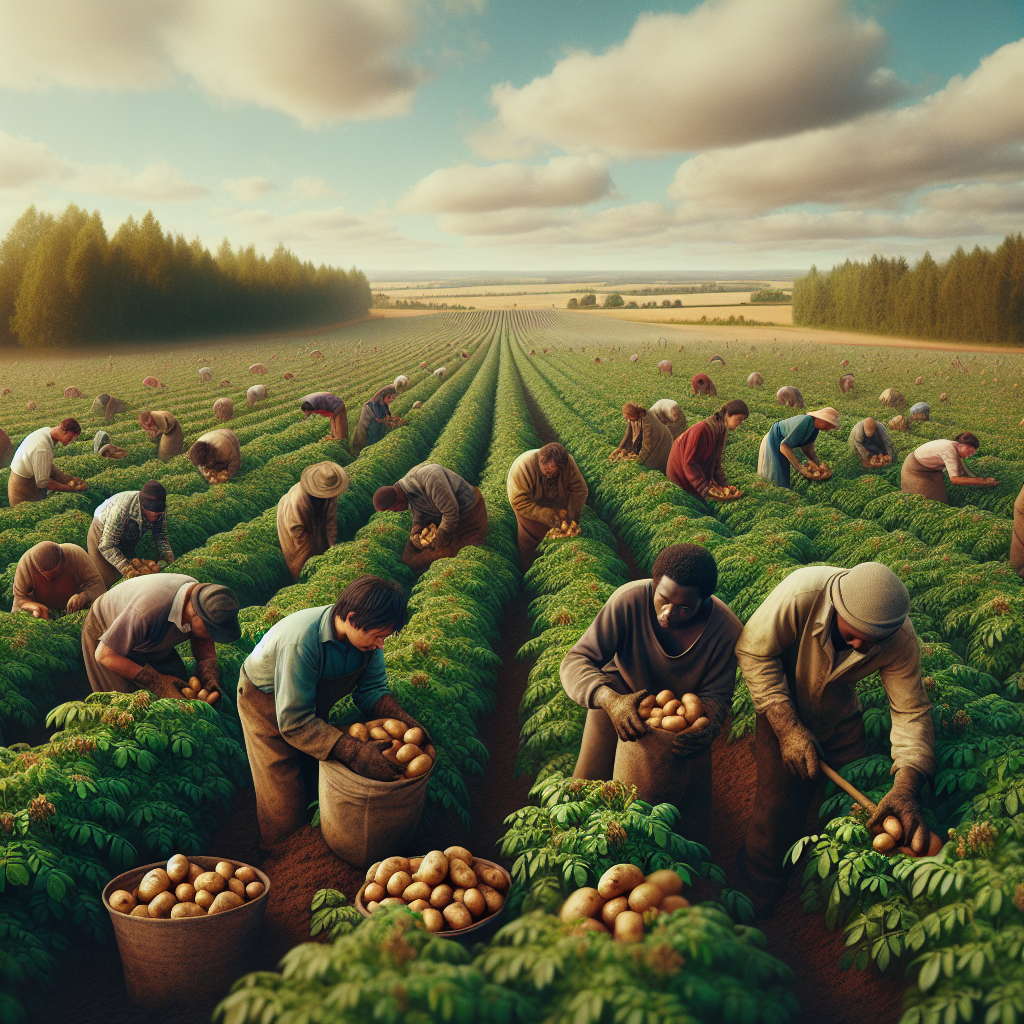From Seed to Spud: The Fascinating Lifecycle of a Potato
Have you ever pondered the journey of a potato from seed to your dinner plate? It’s a tale of growth, resilience, and transformation that’s as fascinating as it is delicious. In this blog post, we’ll delve into the lifecycle of a potato—an unassuming yet essential staple of cuisines worldwide. Whether you’re a gardening enthusiast or just a curious spud lover, this exploration promises to enrich your appreciation for the humble potato.
The Beginning: Seed to Sprout
The life of a potato begins with a seed potato, which is not a seed in the traditional sense but rather a small tuber. This tuber contains the genetic blueprint for the potato plant. When conditions are just right—cool and moist—the seed potato is planted in the soil. As [Potato Goodness](https://potatogoodness.com/all-about-potatoes/) explains, the seed potato needs to be disease-free to ensure a healthy start.
Germination and Early Growth
Once in the ground, the seed potato starts to sprout. This phase, known as germination, occurs as the eyes of the potato tuber develop into shoots. These shoots break through the soil, reaching for sunlight. As the plant matures, it forms a bushy green top, which is crucial for photosynthesis—the process that fuels its growth.
The Underground Magic: Tuber Formation
Beneath the soil, where the real magic happens, stolons (underground stems) start to grow from the lower part of the plant. These stolons swell at their tips to form new tubers, the potatoes we eventually harvest. This stage is a delicate dance between the plant’s need for nutrients and water and the environmental conditions around it. For a thriving potato crop, factors like soil quality, temperature, and moisture must align perfectly.
The Waiting Game: Maturation and Harvest
As the potato plant continues to grow, the tubers mature. They bulk up, converting the plant’s stored energy into the carbohydrates that make potatoes such a valuable food source. When the plant’s foliage begins to yellow and die back, it signals that the tubers are ready for harvest. This stage requires patience and precision to ensure the potatoes are harvested at their peak.
Post-Harvest: Storage and Use
Once harvested, potatoes need to be cured—a process that involves storing them in a warm, dark environment to toughen their skins for better storage. Properly cured potatoes can last for months, making them a reliable food source through the winter months.
The Potato’s Role in Our Lives
The journey of a potato from seed to table is a reminder of nature’s remarkable processes and the intricate balance required to produce the foods we often take for granted. Potatoes are not just a staple but a nutritional powerhouse, rich in vitamins, minerals, and dietary fiber. As [Healthline](https://www.healthline.com/nutrition/foods/potatoes) notes, they are an excellent source of vitamin C, vitamin B6, and potassium, contributing to a balanced diet.
Conclusion: More Than Meets the Eye
The lifecycle of a potato is a testament to nature’s ingenuity and the essential role of agriculture in our lives. Each phase—from a humble seed potato to a nourishing meal—highlights the complex interplay of biology, environment, and human care. As we enjoy our next serving of mashed, baked, or fried potatoes, let’s take a moment to appreciate the journey these spuds have made to grace our plates.
In the grand scheme of things, the potato’s lifecycle encourages us to consider the broader impact of our food choices and the importance of sustainable farming practices in preserving this vital resource for future generations.
